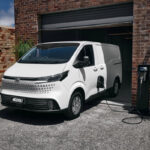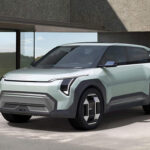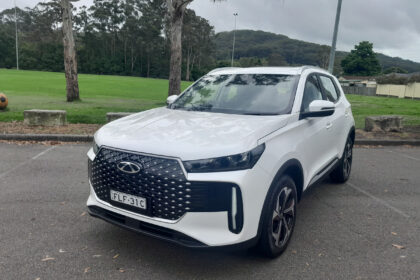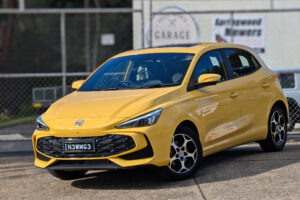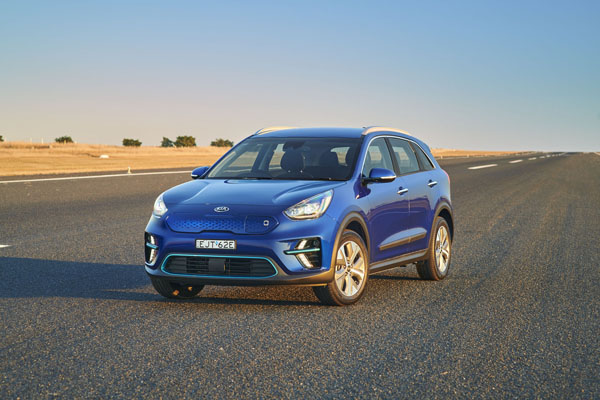
Kia Niro is a small to medium-sized, five-seat SUV that comes in hybrid, plug-in hybrid and
fully-electric form.
All things considered, this is the first electric vehicle we’d actually consider buying. As a
daily driver, it’s doable — and here’s why.
STYLING
Niro is priced from $39,990 for the hybrid, but the one we are interested in — the Niro Pure
Electric — starts from $62,590.
There are two grades to choose from: S ($62,590) and Sport ($65,990). Premium paint
adds $520 and includes all colours apart from Clear White (there are two whites).
While the price may be a little steep, the good news, the NSW Government announced
last year it would abolish stamp duty on EVs, offer buyers a $3000 rebate as well as
removing stamp duty.
That’s right, but it’s not due to come into effect until 2027 — and a lot of things could
change between now and then.
The entry model Niro gets single zone air conditioning with rear vents, 8.0-inch
touchscreen, electronic parking brake with auto-hold, smart cruise control, regenerative
braking, 17-inch aerodynamic alloy wheels, auto lights and wipers, reverse parking
sensors with dash display and solar glass for the windshield and doors.
Sport retains single zone air, but adds LED headlights, a 10.25-inch touchscreen with
built-in navigation, auto high beam, rear view camera with in-audio screen display and
dynamic parking guidelines, plus premium seats, alloy sports pedals, auto up and down
front windows and an electrochromatic rear-view mirror.
Entry S gets combination cloth and leather trim, while Sport lists premium trim (presumably
leather).
Read the fine print and it says leather appointed may comprise genuine leather,
polyurethane and other man-made materials — or a combination thereof.

INFOTAINMENT
Wireless Apple CarPlay and Android Auto with voice recognition are standard, but weirdly
the more expensive Sport only gets the wired version of both.
There’s DAB Digital Radio with AM/FM tuner, Sport also gets 8-speaker premium JBL
audio with a subwoofer in the boot.
ENGINES / TRANSMISSIONS
Its electric motor generates 150kW of power and 395Nm torque, the latter from zero all the
way to 3600 rpm — talk about a flat torque curve. It is paired with a single-speed
transmission that drives the front wheels.
SAFETY
Across the range there are seven airbags, including driver’s knee bag, along with
Autonomous Emergency Braking (car/pedestrian/cyclist), Lane Keep Assist, Lane Follow
Assist, Smart Cruise Control and Driver Attention Alert. Sport adds Blind Spot Detection
and Rear Cross-Traffic Alert.
DRIVING
The large 457kg liquid-cooled, lithium-ion battery pack has a capacity of 180Ah and
64kWh, and is under the floor.
With a 64kWh battery and energy consumption of 15.9 kWh/100km, it can travel a claimed
maximum of 455km between charges.
Over the course of a week, we travelled 548km at a rate of 13.3 kWh/100km, with a 91 per
cent economy rating — charging just the once.
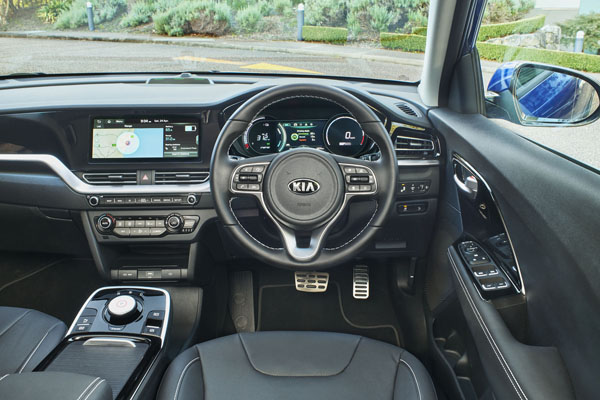
There’s four selectable Drive Modes — Eco, Eco+, Normal, Sport. A ‘virtual’ engine sound
compensates for lack of noise from the electric motor. If you don’t like it, you can turn it off.
It rides on aerodynamic 17-inch alloys and 215/55 R17 Michelin Primacy 3 rubber.
Niro dates back to 2018 and this goes some way to explaining the feel of the cabin which
doesn’t align with the $60K plus asking price. For example, the instrument cluster is
dominated by two analogue gauges, which although digital, lack the eye-candy of Kia’s
more recent releases.
Other niggles include manual seat adjustment, annoying lane change assist and lack of
wireless phone charging.
It’s fun, super responsive and has sufficient range to make a week between recharges
feasible. The ride is a bit on the firm and at times bouncy side. Combine this with a low
centre of gravity and an ability to corner flat, and there’s a surprising amount of fun to be
had on winding roads.
Punch the accelerator and Niro surges forward, back off and it pretty much brakes itself —
you don’t need to touch the brake pedal.
When it comes to EVs, the two things people are most interested in are range and the time
it takes to recharge the car.
Charging, unfortunately, takes ages unless you pay for something with more oomph than
the powerpoint in the garage.
The basic charge cable supplied with the car can take up to 29 hours to fully charge the
battery from empty. Even with a 7.2kW AC wall charger a flat battery will take nine hours
and 35 minutes to recharge.
DC Fast charging, from 0-80 per cent, takes 75 minutes with a 50kW charger or 54
minutes with a 100kW unit.
Charging is accomplished via a Type 2 AC or CCS Combo 2 DC connections. Note that
not all chargers you come across support all types of connection and may require an
adaptor.
Satellite navigation keeps track of the nearest charge station.
You can set the date and time you want the car to be ready, and when to charge the
battery to make use of off-peak tariffs.
Regenerative braking means that a long downhill journey may use little or none of the
precious charge. In fact, you might gain a few kilometres. The energy is collected when the
vehicle is decelerating, either through direct braking or by the use of the steering wheel
paddles.
On Sport variants three levels of regenerative braking can be selected via steering wheel
paddles. The EV models also have the option of Smart Regenerative System, activated by
pulling and holding the right paddle.
When this is activated, the system controls the braking level based on the gradient and
driving style of the car in front through radar.
One Pedal Braking, enabled by holding the left paddle, can effectively bring the car to a
halt.
The boot by the way is quite large and deep, because the battery pack is under the
passenger floor. However, a tyre re-inflation kit is provided in lieu of a spare wheel.
SUMMING UP
Kia says it is considering lower-cost, shorter-range models if research finds buyers are
interested. Personally, we think that’s a bad move, sacrificing long-term goodwill for short
term gain.
How can putting buyers into a car that will not satisfy their needs be a good thing? As it
stands Kia Niro Pure Electric is fun to drive and has sufficient range to serve as a daily
driver. The only stumbling block remains the price.
AT A GLANCE
MODEL RANGE
Niro Hybrid S: $39,990
Niro Hybrid Sport: $43,890
Niro PHEV S: $46,590
Niro PHEV Sport: $50,490
Niro EV S: $62,590
Niro EV Sport: $65,990
Note: These prices do not include government or dealer delivery charges. Contact your
local Kia dealer for drive-away prices.
SPECIFICATIONS (Kia Niro Pure Electric Sport, five-door wagon, front-wheel drive)
PERFORMANCE:
Maximum Power: 150 kW
Maximum Torque: 395 Nm
Fuel Type: Electricity
Battery size: 64kWh
Range: 455km
Energy consumption (WLTP): 15.9 kWh/km
CO2 Emissions: Zero
DRIVELINE: Single Speed Transmission reduction gear, front-wheel drive
DIMENSIONS, WEIGHT AND CAPACITIES:
Length: 4375 mm
Wheelbase: 2700 mm
Width: 1805 mm
Height: 1570 mm
Turning Circle: 10.6 metres
Kerb Mass: 1791 kg
BRAKES:
Front: Ventilated Disc
Rear: Solid Disc
STANDARD WARRANTY:
7 years / unlimited kilometres
Battery 7 years / 150,000km
RATINGS:
Looks: 7/10
Performance: 8/10
Safety: 7.5/10
Thirst: 8.5/10
Practicality: 8/10
Comfort: 7.5/10
Tech: 8/10
Value: 8/10
Overall: 7.8/10




